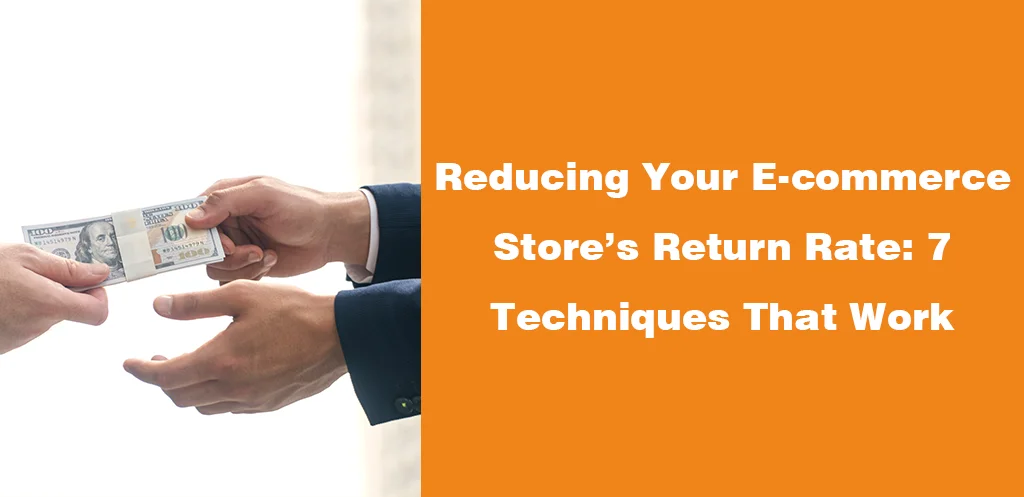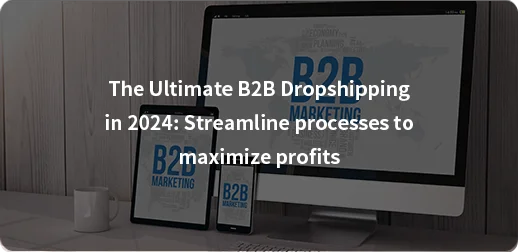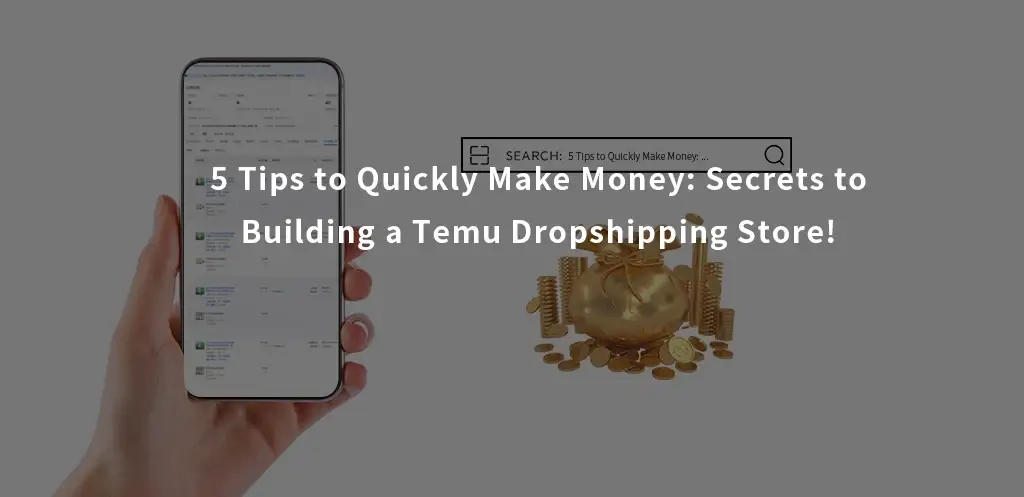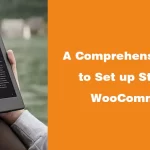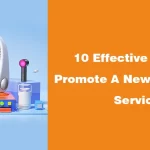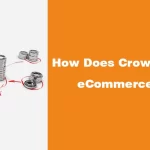Selecting a dropshipping pricing strategy is an essential step in starting your e-commerce business regardless of your strategy because it may dramatically affect how your customers perceive your brand and your profit margin.
This article will walk you through the process of creating a pricing strategy for your dropshipping store that maximizes earnings, pleases customers, and promotes the growth of your company.
What Is a Dropshipping Pricing Strategy?
To start, what precisely is dropshipping?
With the dropshipping business model, you may sell goods without having to deal with production, inventory control, packing, or delivery.
Having a sound pricing strategy is essential to the success of your business because of the distinctive features of the dropshipping model, where you may avoid logistical hassles.
A dropshipping pricing strategy is a methodical process used to set prices for dropshipped goods offered on your online business. In other words, a pricing strategy considers all potential costs to determine the best price that still allows for profitability.
Why Is a Dropshipping Pricing Strategy Essential for Your Business?
- A thoughtful pricing strategy ensures your profitability. Without a thoughtful pricing strategy, you lose money on every single thing you sell. High prices can prevent you from making sales, while low prices may cause you to lose money.
- A strong pricing strategy gives you a competitive advantage over competitors. You run the risk of losing potential customers to your competitors if you price your products higher than the competition without providing any additional value. Pricing your goods less competitively than the industry average, however, can hurt profitability and over time reduce the perceived value of your brand.

What are the Most Common Dropshipping Pricing Strategies for Businesses?
We’ve divided this section since the ideal way to price a dropshipping item may vary depending on the price of the item at the supplier. In this section, We’ll explain how to price low-ticket, medium-ticket, and high-ticket items.
Don’t worry if you prefer to learn through examples. We’ll choose a product as an example for each price range and walk you through how to price it.
Low-Ticket Products Dropshipping Pricing Strategies
Low-ticket items are the most affordable kind of your product line, and they typically cost between $0 and $10 to buy from your supplier, including delivery. As you define it, keep in mind that these are not the fixed prices for various product classes.
These goods frequently fall within categories like basic toys or accessories, compact electronics, etc.
Among the characteristics of low-ticket goods are, but are not limited to:
- Reduced cost per acquisition
- Reduced perceived value
- Low cost of marketing
- Small
- Easily delivered and deposited
- Sensitive to persons who make impulsive purchases
If you use the proper pricing strategy, low-ticket (or low-cost) goods can have very high-profit margins. For this kind of product, dropshipping pricing strategies include the following two:
1. Fixed Markup on Cost
The price point of a product is determined by adding a predetermined percentage or dollar amount to the cost of the item in a pricing strategy known as fixed markup on cost. The markup is constant and is applied to every item that your store sells.
The formula for Dropshipping Pricing:
- Fixed dollar markup: Selling price = Cost per unit + Dollar markup
- Fixed percentage markup: Selling price = Cost per unit + Cost per unit x Markup percentage
NOTE: Look at the typical cost of your products to decide whether to employ fixed dollar markup or fixed percentage markup. Consider employing the set dollar markup rather than the fixed % markup for extremely inexpensive products.
As an Illustration: Assume that the average cost of your goods is $6. If you mark each product up by 10%, you’ll only collect $0.6. To generate a significantly bigger profit margin per item, you might instead add a fixed monetary sum of $3 or $5.
Advantages
- Constant margins of profit
- Simple to understand and apply
- Better cost tracking
Disadvantages
- Setting the correct makeup to generate income is challenging
- Insufficient pricing power
- Unaware of the state of the market
- This might cause certain products to be overpriced or underpriced
2. Free Plus Shipping Strategy
Free Plus Shipping, where you provide a product for free and just charge the client for shipping, is an additional dropshipping pricing strategy that excels for low-ticket items.
While the amount clients pay will be more than the actual cost of shipping to cover your product expenditures and provide you with a profit, the free item is typically one with a high perceived value.
NOTE: Use this strategy for goods that won’t set you back more than $10 to buy and transport. Charge no more than $15 for shipping; otherwise, buyers can feel duped into paying both the shipping fee and the cost of the product, eroding their faith in your business.

Advantages
- Instantly improve products’ appeal
- Entice new clients
- Generating more money
- Improve sales
- Offer customers a risk-free option.
Disadvantages
- Possibility of negative consumer feedback
- Limited margins for profit
- Work best when used immediately
- To lower the danger of income loss, proper planning and management are necessary.
- Fewer product choices
Medium-Ticket Products Dropshipping Pricing Strategies
In the middle of your product assortment, medium-ticket items are priced to appeal to the majority of customers. These goods can typically be purchased from the source for about $10 and $30, including shipping.
When it comes to product complexity, costs, values, profit margins, and shipping, medium-ticket products strike a good mix between low-ticket and high-ticket ones.
These products include baby wrap brackets, home décor items, and brushes for hair straighteners, among others.
The two best pricing strategies for medium-ticket goods are listed below:
1. Cost-Based Pricing
The process of setting product prices based on the costs incurred to make, distribute, and sell the product, including the cost of goods sold, marketing expenditures, platform fees, etc., is known as cost-based pricing and is one of the best pricing approaches for medium-ticket products.
Using this method, you calculate the final selling price by raising the total production cost by the appropriate markup.
The formula for Dropshipping Pricing: Selling price = Total cost per order x (1 + Markup percentage)
Consider this Scenario: You own a Shopify dropshipping fitness equipment company online. A supplier’s price for a pair of dumbbells is $25, plus $5 for shipping each order. Additionally, you must pay $29 per month for the Shopify basic plan and $11 per month for domain and email hosting, for a total set cost of $40 per month.
The dropshipping pricing calculation will look like this if you opt to add a 30% markup to the 50 pairs of dumbbells you sell each month:
- Cost per purchase = $25
- Shipping fee = $5
- Monthly fixed cost per product = $40 ÷ 50 = $0.8
- Total cost per order = $25 + $5 + $0.8 = $30.8
- Markup percentage = 30%
- Selling price = $30.8 x (1 + 30%) = $40.04
Therefore, to pay all expenses and make an attractive profit of 30% or $9.24 for each purchase, you must charge about $40.04 for a pair of dumbbells.
NOTE: Consider rounding the price to a .99 value if you can to make your products more psychologically appealing to clients. You can charge $39.99 for a pair of dumbbells in the example above.
Advantages
- Simple to understand and put into practice
- The regular rate of return
- Transparent to clients
- Full reimbursement of the entire expense
Disadvantages
- Unaware of market dynamics and customer attitudes
- Rigid in terms of pricing. Overpricing or underpricing could result from this.
- Chance of making incorrect cost assumptions
2. Bundle Pricing
Bundling is a great option for medium-ticket products since it encourages buyers to buy more, which boosts sales.
By bundling numerous medium-ticket products together, the bundle pricing approach makes them more affordable than buying them separately.
NOTE: Be cautious when choosing things to put in a bundle to assure the profitability of your offerings; otherwise, this strategy will backfire on you. Bundles should contain similar items that give buyers an equivalent amount of value. Include no items that are already performing exceptionally well in sales as this could result in a loss of profit.

Advantages
- Reduced marketing expenses
- Greater sales
- Rise in the average order value
- Distinguish oneself from competitors
Disadvantages
- More difficult price calculations
- This could result in certain items losing money
- Customers find it more challenging to compare pricing with different sellers
High-Ticket Products Dropshipping Pricing Strategies
The most expensive things on your store’s shelves are high-ticket items, which can cost at least $30 to purchase from a supplier but can go up to $1,000 or more.
These things, which can be classified as electronics, cars, luxury watches, fine jewelry, and designer clothing, are frequently regarded as high-end or premium goods.
High-ticket products have features such, as but are not limited to:
- Excellent quality
- High cost per acquisition
- Strong perception of value
- High cost of marketing
- Can be substantial and challenging to deliver
High-ticket items might be more difficult to sell and price, but by using the right dropshipping pricing plan, you can ensure that your company will make the most money possible.
Here, we present two pricing strategies that are appropriate for this kind of goods.
1. Perceived Value Pricing
For expensive goods, one common pricing strategy is perceived value pricing. With this tactic, the price of your product is set by how much buyers think it is worth.
Numerous aspects of a product, such as its external look, quality, functionality, availability, brand value, customer service, and overall customer experience, can affect how valuable consumers believe it to be.
More money spent on these aspects might raise the perceived value of the goods and enable higher charges.
You must have a thorough understanding of your target market and the variables that could affect how they perceive value to customize the product and your dropshipping pricing plan to work for your business.
Advantages
- Greater perception of value
- The potential for increased profit margins
- Higher consumer loyalty
Disadvantages
- Costly branding expenses
- Choosing the best pricing is difficult.
- Overpricing danger
- Limited clientele
2. Premium Pricing
Premium pricing, often known as prestige pricing, entails strategically pricing your goods more than the going rate for the market.
This strategy, which aims to give buyers the impression of premium quality and exclusivity, can help dropshipping businesses that sell high-end goods or want to establish themselves as luxury or high-end brands.
NOTE: To justify the higher price point, premium pricing calls for better product quality and customer care, such as quicker shipment and individualized support. Therefore, to establish a well-known brand name for premium offerings, be sure to get high-quality products from reputable suppliers.
Advantages
- Higher margins of profit
- Greater perception of value
- Better brand perception
Disadvantages
- Low volume of sales
- High prices for branding
- Limited market share and consumer base
- Decreased pricing competition
- Risk of harm to the brand’s reputation if the product falls short of the expectations raised by the higher price.
What are the Other Dropshipping Pricing Strategies for Businesses?
1. Tiered Markup on Cost
Tiered Markup on Cost is a pricing technique where you establish a range of markup percentages based on the price of the goods.
To put it simply, different markups are applied to products in various price ranges or “tiers” to establish the selling price, providing for greater pricing flexibility.
This dropshipping pricing strategy is appropriate for retailers with a wide selection of products and prices.

2. Competition-Based Pricing
Competition-based pricing, as its name suggests, is a strategy in which the selling price is decided based on the price points of your main rivals. To decide whether to price your dropshipping products higher, lower or the same as the competition, you must compare and analyze dropshipping prices.
Competitive pricing enables enterprises to enter the market quickly while also successfully retaining customers and growing their market share. This dropshipping pricing strategy is appropriate for markets with plenty of shops offering the same goods.
3. Psychological Pricing
The trickiest pricing strategy, psychological pricing employs prices to affect customers’ purchasing decisions and perceptions of value. A well-known instance of psychological pricing is charm pricing, in which the prices are typically set at .99 cents, which is a little less than a whole number.
This tactic can be used in conjunction with any other pricing techniques to instantly increase interest in your products and increase sales. This dropshipping pricing strategy is appropriate for all goods.
The Conclusion
The appeal of dropshipping is that it is a dynamic sector of commerce. It’s possible that your supplier could stop carrying the goods you need or that they will raise their rates, leading you to follow suit.
Whatever the circumstances, you must test and determine the maximum price you can set without driving away buyers if you want to develop the ideal dropshipping pricing strategy. On weekends or during certain holidays, you might decide to cut your costs.
Because there is less financial risk involved (you don’t have to buy the product until someone buys it from you), you can experiment with several pricing strategies to determine which one works best for you.
Talk to your source about everything if you can. Find out if they have any suggestions for what pricing strategy would be most effective for the products you’ve selected.
They might be able to provide you with recommendations based on their experience with other clients and assist you in determining the best course of action.


